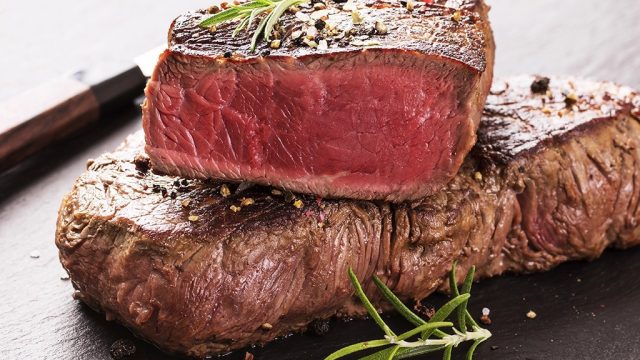This Is the Safest Way to Thaw Frozen Food
Enjoy healthier, more delicious meals with this safe food-thawing tip.

Keeping a few key ingredients stored away in the freezer can make all the difference on those hectic days when a trip to the store just isn't in the cards. However, especially when meat is involved, improper thawing techniques can not only ruin a meal, they can make you seriously ill in the process.
So, how can you safely get that ice-encrusted prime rib ready for dinner? Despite the convenience of leaving your frozen food on your counter to defrost, doing so might make you more likely to end up sitting in the E.R. than at the dinner table.
According to the National Center for Home Food Preservation, countertop thawing is a potentially-perilous approach, leaving your food vulnerable to rapid bacterial growth once the temperature rises above 40 degrees Fahrenheit. Instead, the safest way to thaw your food is to plan ahead and move it from the freezer to the refrigerator. This thaws food slowly and evenly while keeping it out of the "danger zone," or temperatures between 40 and 140 degrees, at which bacteria tends to grow rapidly. In fact, according to the USDA Food Safety and Inspection Service, bacteria can double in number in just 20 minutes when food is kept at these temperatures.
While fridge thawing may keep your food safe to eat, it certainly involves a significant investment of time. The critical piece of the puzzle that will keep your food safe and get your dinner on the table in a timely manner? Giving yourself plenty of extra hours to prep your meal. Try making it a habit to give some thought to tomorrow's meal while cooking today's.
According to the USDA, standard portions of food usually require 24 hours of thawing in the fridge, so come dinner time tonight you'll be right on target to start thawing tomorrow night's meal. However, toss this timeline if you're cooking something more substantial. Larger projects, like thawing a turkey, require a full 24 hours of thawing in the fridge for every five pounds of meat.
That said, if your lack of preparation leads you to go digging in the freezer without much time to spare, there's still hope. In that case, you can use a cold water method to defrost, which is faster, but requires more supervision. To do this, wrap your food in an airtight plastic bag and submerge it in cold water. Replace the water every 30 minutes. For one-pound item, this process takes just one hour. A three- to four-pound item should take between two and three hours. Be sure to cook your food right away once the thawing is complete. This will ensure that there is no time for a potentially-dangerous temperature change.
Once you get into the routine of checking your freezer ahead of time, a perfect meal is just a few steps away. And when you want to make every meal healthier, start by adding the 25 Foods That'll Keep You Young Forever to your menu!
To discover more amazing secrets about living your best life, click here to sign up for our FREE daily newsletter!





















